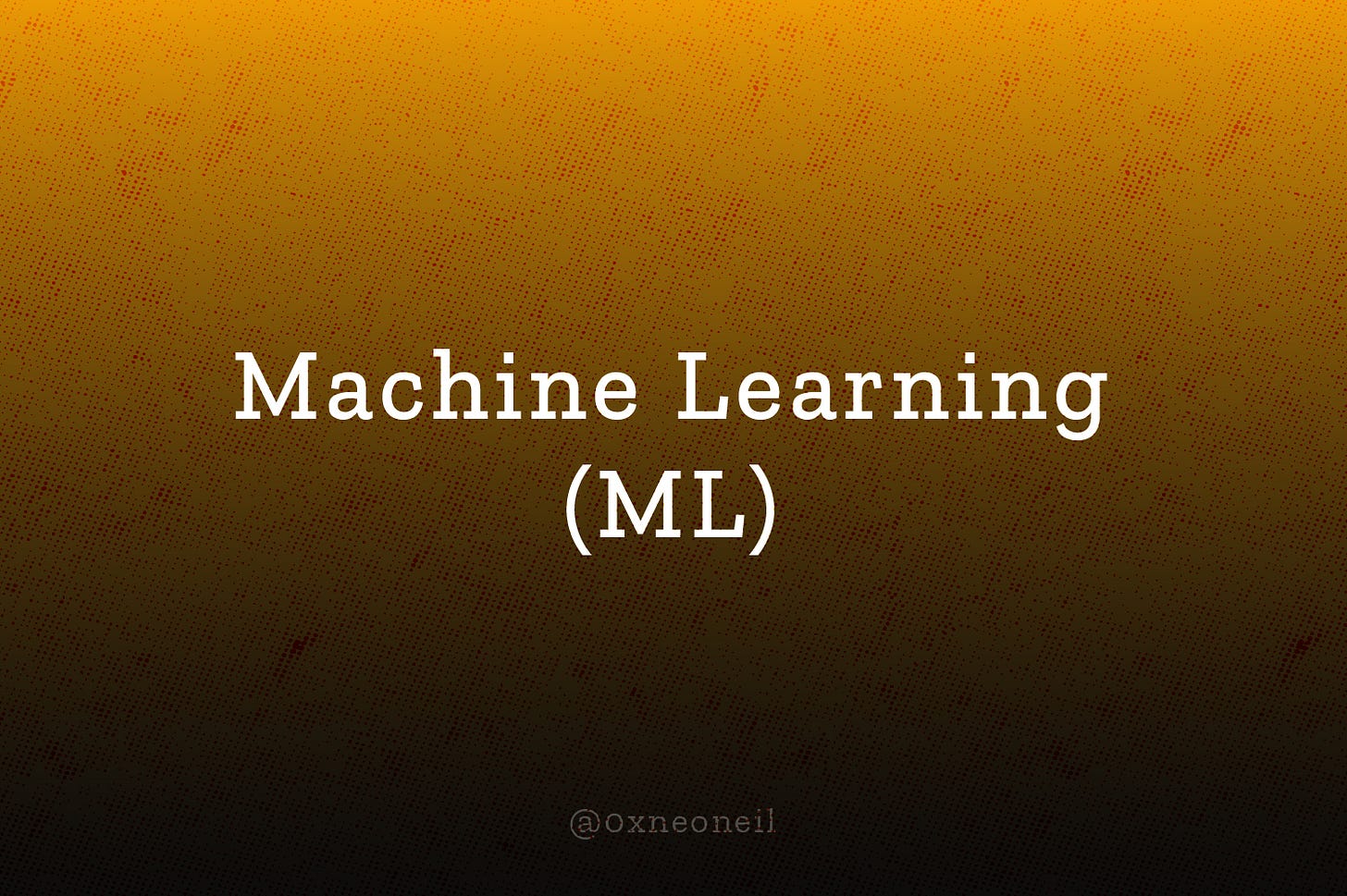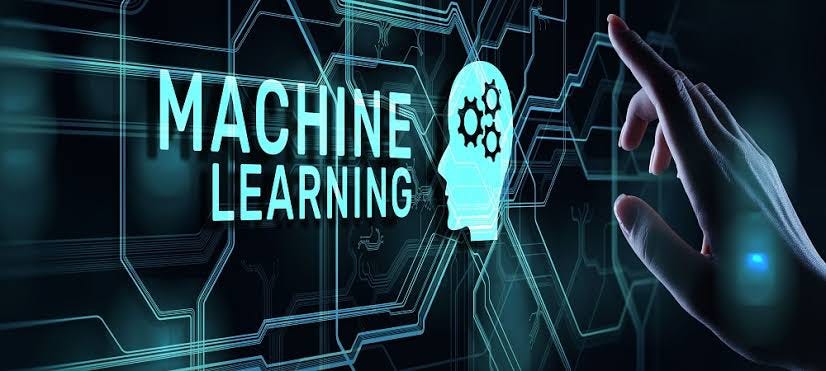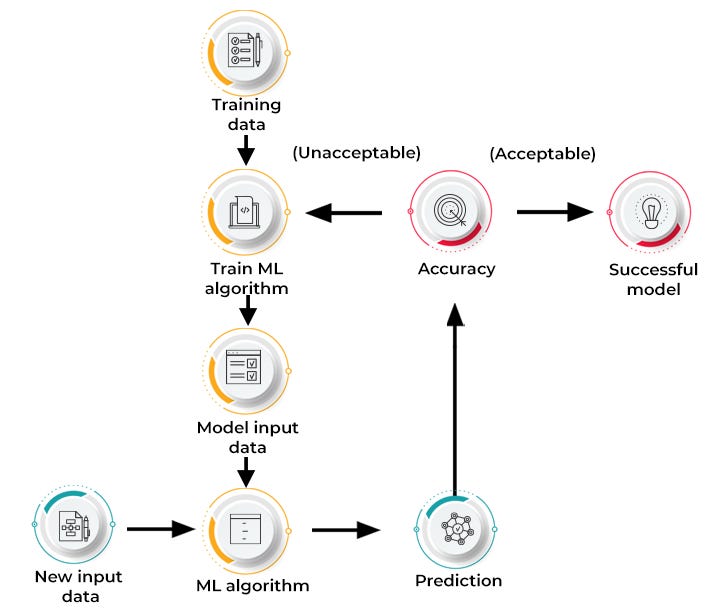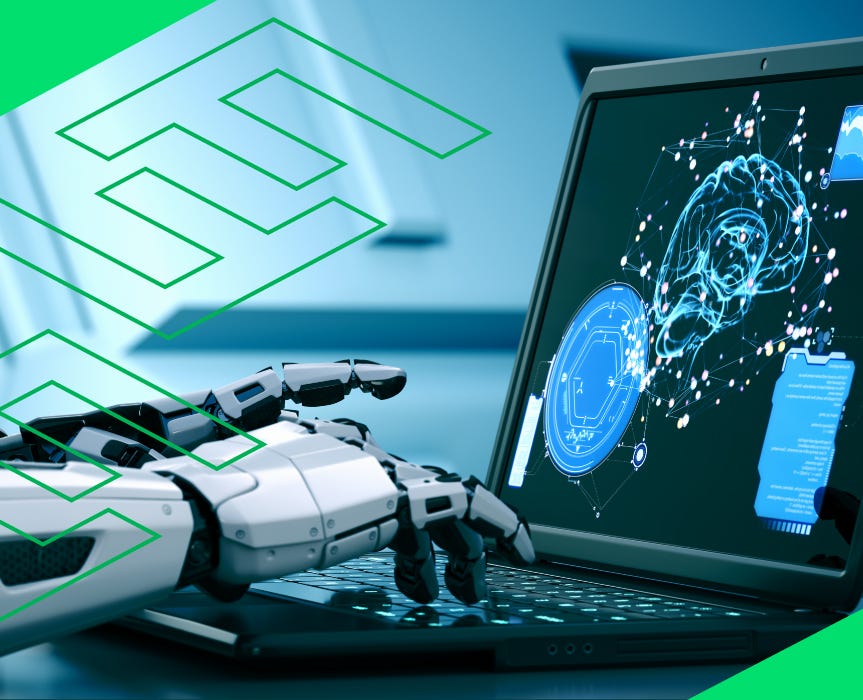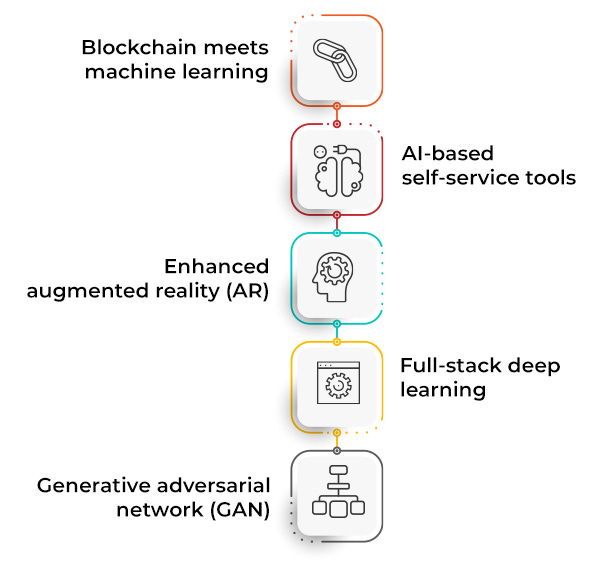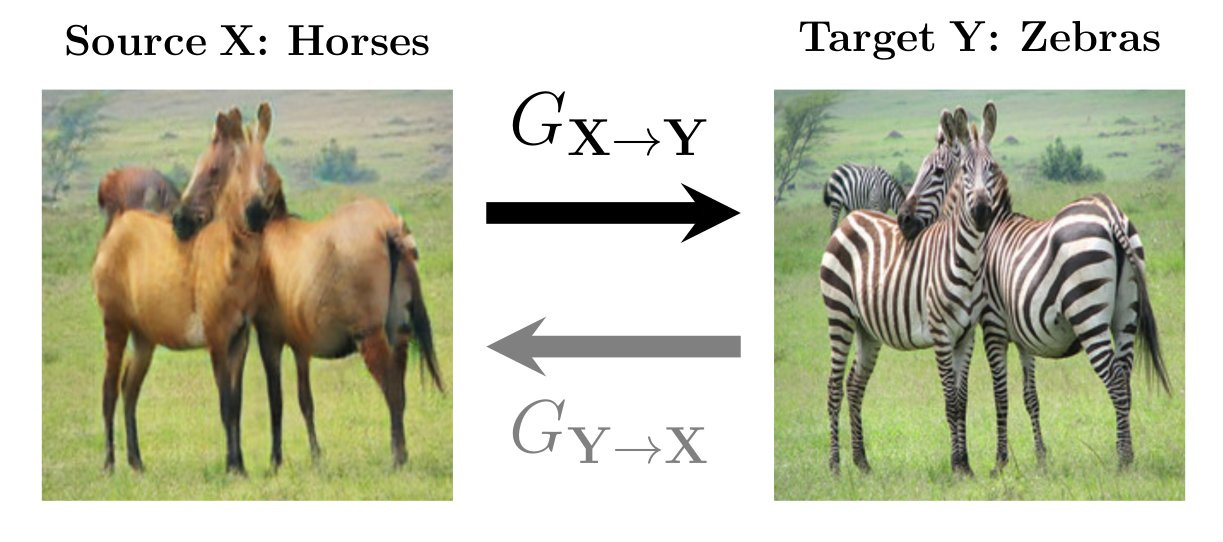Understanding Machine Learning (ML)
Machine Learning is a fundamental component of the field of (AI) that empowers machines to automatically learn from data and past experiences in the process of recognizing patterns to make prediction.
Hello everyone!
In the article about AI, I briefly introduce Machine Learning.
Machine Learning is the process of teaching machines to learn from data and improve over time without the need for detailed programming. In this article, we will delve deeper into the fundamental principles of machine learning, its common types, diverse applications, and the prominent trends in the field of machine learning today.
I'm Neo— Admin — Community Manager of Optimus Finance and Growth Marketing of LECLE Vietnam. Let's go!
1. What is Machine Learning?
Machine Learning is a fundamental component of the field of Artificial Intelligence (AI) that empowers machines to automatically learn from data and past experiences in the process of recognizing patterns to make predictions without significant human intervention.
Machine Learning methods enable computers to operate automatically without the need for explicit programming. ML applications are fed with new data, and they possess the capability to self-learn, evolve, develop, and adapt independently.
Machine Learning extracts meaningful information from large volumes of data by employing algorithms to recognize patterns and learn through an iterative process. ML algorithms use computational methods to learn directly from data, rather than relying on any predetermined equations that might be used as a model.
The performance of Machine Learning algorithms enhances flexibility as the available number of data samples increases during the 'learning' process. For instance, Deep Learning is a type of machine learning that trains computers to simulate human-like features such as learning from examples. It provides parameters for better performance compared to traditional machine learning algorithms.
Although Machine Learning is not a new concept—emerging during World War II when the Enigma machine was used—the ability to apply complex mathematical operations automatically to increasingly large and diverse datasets is a relatively recent development.
Nowadays, with the rise of big data, IoT, and ubiquitous computing, Machine Learning has become a crucial factor in addressing challenges in various fields, such as
Computational finance (credit score, algorithmic transactions...)
Computer vision (facial recognition, motion tracking, object detection...)
Computational biology (DNA sequencing, brain tumor detection, drug discovery,...)
Automotive, aerospace, and manufacturing (predictive maintenance)
Natural language processing (voice recognition)
2. How does Machine Learning work?
Machine Learning algorithms are formed on a training dataset to create a model. When new input data is introduced to the trained machine learning algorithm, it utilizes the developed model to make a prediction.
Note: The images above reveal a high-level use case. However, typical examples of machine learning may involve various factors, variables, and additional steps.
Furthermore, predictions are tested to ensure accuracy. Based on its accuracy, the machine learning algorithm will be deployed or retrained iteratively with an expanded training dataset until the desired level of accuracy is achieved.
3. Types of Machine Learning
Machine Learning algorithms can be trained in various ways, each with its own advantages and disadvantages. Based on these methods and learning approaches, machine learning is broadly divided into four main types:
3.1. Supervised Machine Learning
This type of Machine Learning involves supervised learning, where the machine is trained on labeled datasets and has the ability to predict outcomes based on the provided training process. The labeled dataset indicates that some input and output parameters have been pre-mapped. Thus, the machine is trained with corresponding inputs and outputs. The device is designed to predict results using test datasets in subsequent stages.
For example, consider a dataset with images of parrots and owls. Initially, the machine is trained to understand images, including the color, eyes, shape, and size of parrots and owls. After the training process, an input image of a parrot is provided, and the machine is expected to recognize the object and predict the outcome. The trained machine will examine the features of the object such as color, eyes, shape, etc., in the input image to make a final prediction. This is the process of object recognition in supervised machine learning.
The primary goal of supervised learning is to map input variables (a) to output variables (b). Supervised learning is categorized into two major classes:
Classification: These are algorithms that address classification problems, where the output variable is a category; for example: yes or no, true or false, male or female, etc. Real-world applications of this type are evident in spam detection and email filtering. Some popular classification algorithms include the Random Forest model, Decision Tree algorithm, Logistic Regression algorithm, and Support Vector Machine algorithm.
Regression: Regression algorithms address regression problems, where there is a linear relationship between input and output variables. They are known for predicting continuous output variables. Examples include weather prediction, market trend analysis, etc. Some popular regression algorithms include Simple Linear Regression, Multivariate Regression algorithm, Decision Tree algorithm, and Lasso Regression algorithm.
3.2. Unsupervised Machine Learning
Unsupervised learning refers to a learning technique without supervision. Here, the machine is trained using an unlabeled dataset and has the ability to predict outcomes without any provided supervision. Unsupervised machine learning algorithms aim to cluster unsorted datasets based on similarity, dissimilarity, and patterns in the input.
For example, consider an input dataset containing images of a container filled with fruits. In this case, the images are unknown to the machine learning model. When we feed the dataset into the machine learning model, the model's task is to identify patterns of objects, such as color, shape, or differences in the input images and classify them. After classification, the machine then predicts outcomes when tested with a test dataset.
Unsupervised machine learning is further classified into 2 types:
Clustering: Clustering techniques involve grouping objects into clusters based on parameters such as similarity or dissimilarity between the objects. For example, grouping customers based on the products they purchase.
Some popular clustering algorithms include the K-Means clustering algorithm, Mean-Shift algorithm, DBSCAN algorithm, Principal Component Analysis (PCA), and Independent Component Analysis (ICA).
Association: Association learning refers to determining typical relationships between variables in a large dataset. It identifies dependencies among different data items and maps related variables. Common applications include web usage mining and market data analysis.
Popular algorithms adhering to association rules include the Apriori algorithm, Eclat algorithm, and FP-Growth algorithm.
3.3. Semi-supervised Learning
Semi-supervised learning combines features of both supervised and unsupervised learning. It utilizes a combination of labeled and unlabeled datasets to train its algorithms. By leveraging both types of datasets, semi-supervised learning overcomes the drawbacks of the options mentioned earlier.
Let's consider an example of a college student:
A student learning a concept under the guidance of a teacher at the university is called supervised learning. In unsupervised learning, a student learns a concept on their own at home without the guidance of a teacher. Meanwhile, a student reviewing a concept after initially learning it under the supervision of a university teacher is a form of semi-supervised learning.
3.4. Reinforcement Learning
Reinforcement Learning is a feedback-driven process. In this, an artificial intelligence (AI) component autonomously assesses the situation through trial and error, takes actions, learns from experience, and improves performance. This component is rewarded for each successful action and penalized for each erroneous step. Therefore, reinforcement learning aims to maximize rewards by executing good actions
Differing from supervised learning, reinforcement learning lacks labeled data, and agents learn through unique experiences.
Consider a video game. In this scenario, the game defines the environment, and each move of the reinforcement learning agent determines its state. The agent is entitled to receive feedback through penalties and rewards, influencing the overall score of the game. The ultimate goal of the agent is to achieve a high score.
Reinforcement learning is applied in various fields such as game theory, information theory, and multi-agent systems. Reinforcement learning is divided into 2 types of different methods or algorithms:
Positive Reinforcement Learning: this refers to adding a reinforcement stimulus after a specific behavior of the agent, increasing the likelihood that the behavior may occur again in the future, for example, by adding a reward after a behavior.
Negative Reinforcement Learning: refers to strengthening a specific behavior that avoids a negative outcome.
4. Applications of Machine Learning
4.1. Healthcare Industry
Machine Learning is increasingly applied in the healthcare industry, thanks to wearable devices and sensors such as health monitoring devices worn on the body, smart health watches, etc. All these devices track user health data to assess their health status in real-time.
Furthermore, this technology is assisting healthcare professionals in analyzing trends or alerting them to events that can support more effective patient diagnosis and treatment. Machine learning algorithms even enable healthcare experts to predict the life expectancy of a patient with a dangerous illness with increasing accuracy.
Furthermore, Machine Learning is making significant contributions in 2 areas:
Drug discovery: The development or discovery of a new drug is expensive and involves an extended process. Machine learning aids in accelerating steps in such a multi-step process. For example, Pfizer uses IBM Watson to analyze vast unrelated datasets to discover drugs
Personalized treatment: Pharmaceutical manufacturers face the significant challenge of confirming the effectiveness of a specific drug for a large population. This is because a drug may only work for a small subset in clinical trials and may cause adverse effects for some individuals.
To address these challenges, companies like Genentech have partnered with GNS Healthcare to leverage machine learning and artificial intelligence simulation platforms, innovating in personalized healthcare solutions. Machine learning technology explores patient response markers by analyzing individual genes, thereby providing tailored therapies for patients.
4.2. Financial Industry
Currently, many financial institutions and banks use Machine Learning technology to combat fraudulent activities and extract crucial insights from large datasets. Information derived from Machine Learning helps identify investment opportunities, assisting investors in deciding when to execute transactions.
Furthermore, data mining methods help monitoring systems pay attention to warning signs of fraudulent activities, subsequently thwarting them. Many financial organizations have collaborated with technology companies to leverage the benefits of machine learning.
For instance,
Citibank has collaborated with the fraud detection company Feedzai to address online and direct banking fraud cases.
PayPal utilizes various Machine Learning tools to distinguish between legitimate and fraudulent transactions between buyers and sellers.
4.3. Retail Industry
Retail websites widely employ machine learning technology to recommend products based on users' shopping history. Retailers use machine learning techniques to gather data, analyze it, and deliver a personalized shopping experience for their customers. They also deploy machine learning for marketing campaigns, customer insights, merchandise planning, and price optimization.
The market for recommendation systems worldwide is projected to reach a value of $17.30 billion by 2028, according to a report by Grand View Research, Inc. Some everyday examples of recommendation systems include:
When you browse items on Amazon, the suggested products you see on the homepage are the result of machine learning algorithms. Amazon uses artificial neural networks (ANN) for intelligent, personalized recommendations based on recent shopping history, feedback, ratings, and other online activities of customers.
Netflix and YouTube heavily rely on recommendation systems to suggest shows and videos for users based on their viewing history.
Furthermore, retail websites are also equipped with virtual assistants or chatbots that use machine learning, natural language processing (NLP), and natural language understanding (NLU) to automate the customer shopping experience.
4.4. Travel Industry
Machine Learning plays a crucial role in expanding the scope of the travel industry. Both Uber, Ola, and even autonomous vehicles have robust underlying machine learning systems.
Consider Uber's machine learning algorithm managing dynamic pricing for their rides. Uber employs a machine learning model called 'Geosurge' to handle dynamic pricing parameters. It uses real-time prediction models based on traffic patterns, supply, and demand. If you're running late for a meeting and need to book an Uber in a crowded area, the dynamic pricing model will be triggered, and you may get an Uber immediately but at double the usual fare.
Moreover, the travel industry uses Machine Learning to analyze user reviews. User comments are categorized through sentiment analysis based on positive or negative scores. This is utilized for monitoring campaigns, brand monitoring, compliance monitoring, etc., by companies in the travel industry.
4.5. Social Media
With Machine Learning, user engagement rates can be effectively boosted on social media platforms. Machine Learning plays a crucial role in enhancing social media platforms by personalizing news feeds and providing targeted advertisements to users.
For example, Facebook's automatic tagging feature uses image recognition to identify faces in photos and automatically tags them. The social media platform employs Artificial Neural Networks (ANN) to recognize familiar faces in the user's contact list, facilitating automatic tagging.
Similarly, LinkedIn knows when you should apply for the next position, whom you should connect with, and how your skills rank compared to your peers. All of these features are powered by Machine Learning.
5. The current trends in Machine Learning
Based on the increasing application of Machine Learning, here are the current trends in Machine Learning today.
5.1. Blockchain meets Machine Learning
Blockchain, the technology behind cryptocurrencies like Bitcoin, brings numerous benefits to many businesses. This technology utilizes a decentralized ledger to record every transaction, thereby promoting transparency among involved parties without any intermediaries. Moreover, transactions on the blockchain cannot be erased or altered once the ledger is updated.
It is anticipated that blockchain will integrate with Machine Learning and Artificial Intelligence (AI), as certain specific features complement each other in both of these technologies. This includes decentralized ledgers, transparency, and immutability.
For example, banks like Barclays and HSBC are working on projects driven by blockchain, offering interest-free loans to customers. Additionally, banks use Machine Learning to determine the creditworthiness of potential borrowers based on their spending patterns. Such detailed information is helpful for banks to decide whether the borrower deserves the loan or not.
5.2. AI-based self-service tools
Many businesses have employed solutions based on Artificial Intelligence (AI) or self-service tools to optimize their operations. Major technology companies like Google, Microsoft, and Facebook use bots on their messaging platforms such as Messenger and Skype to efficiently perform self-service tasks.
For example, when you search for a location on a search engine or Google Maps, the "Get Directions" option automatically appears. This provides you with the most accurate route to your desired destination, saving time. If such trends continue, ultimately, machine learning will be able to provide a completely automated experience for customers seeking products and services from businesses.
5.3. Personalized AI assistants & search engines
As everyone is familiar with AI virtual assistants like Siri and Alexa. These voice assistants perform various tasks such as booking flights, paying bills, playing the user's favorite music, and even sending messages to colleagues.
Over time, it is expected that these conversations will provide a more personalized experience, such as offering legal advice on various issues, making important business decisions, providing personalized healthcare treatment, etc.
Conversely, search engines like Google and Bing traverse multiple data sources to provide relevant content. With increasing personalization, modern search engines can now traverse personal data to deliver personalized results for users.
For example, when you search for "sports shoes" on Google, the next time you access Google, you will see ads related to your previous search. Therefore, search engines are becoming more personalized as they can provide specific results based on your data.
5.4. All-inclusive smart assistance
With personalization playing a more significant role, smart assistants are ready to provide comprehensive support by performing tasks on our behalf, such as driving, cooking, and even grocery shopping. This includes advanced services that we often use through human agents, like arranging trips or scheduling doctor appointments when sick.
For example, if you're feeling unwell, you simply call upon your assistant. Based on your personal data, it will schedule an appointment with a top doctor in your area. Then, the assistant will continue to monitor you by arranging the hospital and booking a ride to pick you up on time.
5.5. Personal medical devices
Medical devices that can be worn on the body have become part of our daily lives. These devices measure health data, including heart rate, blood sugar levels, etc. However, with the widespread implementation of Machine Learning and artificial intelligence (AI), these devices will provide even more data for users in the future.
Wearable devices will be able to analyze real-time health data and provide personalized diagnoses and treatments based on the specific needs of each individual. In critical cases, sensors may suggest a series of health tests based on medical data. They can also schedule appointments with available healthcare professionals nearby.
5.6. Applications of Augmented Reality (AR)
Although Augmented Reality (AR) has existed for several years, we are witnessing the true potential of the technology today. Microsoft's HoloLens is a popular example. These AR glasses project a digital overlay onto the physical environment, allowing users to interact with the virtual world using voice commands or hand gestures.
However, advanced versions of AR are poised to garner attention in the coming months. In the future, such devices will continue to improve, potentially enabling direct interaction and communication with friends and family from any location. This is one of the reasons why virtual reality developers are highly regarded today.
5.7. Advancements in the automobile industry
Self-driving cars have been tested on the streets. They are capable of driving in complex urban environments without the need for human intervention. Although there are still many doubts about when they should be allowed to operate on the roads.
This will not only be limited to the field of autonomous vehicles but could also transform the transportation industry. For example, autonomous buses could navigate, transporting many passengers to their destination without the need for human intervention.
5.8. Full-stack Deep Learning
Currently, Deep Learning is establishing its foundation in applications such as image recognition, autonomous vehicle navigation, voice interaction, and many other applications. Moreover, games like DeepMind's AlphaGo leverage deep learning to play at an expert level.
Deep Learning will find applications in medical imaging, where doctors use image recognition to diagnose conditions with higher accuracy. Furthermore, deep learning will make significant advancements in developing programming languages that can understand code and write programs based on provided input data.
For example, consider an Excel spreadsheet with extensive financial data. Here, a machine learning (ML) system would use deep learning (DL) based programming to understand which numbers are good or bad data based on previous examples.
5.9. Generative Adversarial Network - GAN
Generative Adversarial Network (GAN) has been a significant breakthrough in the field of machine learning (ML) in recent years. It allows the generation of valuable data from scratch or random noise, often images or music. Instead of training a Single Neural Network with millions of data points, GAN involves Two Neural Networks competing with each other to find the best possible outcome.
For example, when you input an image of a horse into a GAN, it might generate an image of a zebra.
5.10. TinyML
TinyML has revolutionized the field of machine learning (ML). Inspired by the Internet of Things (IoT), it enables IoT devices at the network edge to run machine learning processes. For example, wake-word commands on smartphones like "Hey Siri" or "Hey Google" fall under the realm of tinyML.
Moreover, sending web requests to a server takes time to generate a response. Typically, the request involves sending data to the server, processed by a machine learning algorithm before receiving a response. Instead, a time-efficient approach can be using machine learning programs on edge devices such as ATMs, digital cameras, etc. This method has various advantages, including low latency, minimal energy consumption, reduced bandwidth usage, and ensuring user privacy.
With the proliferation of connected devices, tinyML will continue to evolve in complexity and become more widespread in the future.
6. Closing thoughts
Computers, capable of learning, remembering, and producing accurate outputs through machine learning (ML), have empowered companies to make informed decisions with critical information to optimize their business operations. Decisions based on such data help companies in various industries, from manufacturing, retail, healthcare, energy, to financial services, optimize their current operations while exploring new methods to alleviate their overall burdens.
As computer algorithms become increasingly intelligent, we can anticipate a rising trend of machine learning in the future.
What about your thoughts? If you want to know further about it, don’t hesitate to share it with us! 😀
This post is for educational purposes only. All materials I used were the different reference sources. Hope you like and follow us and feel free to reach out to us if there is an exchange of information. Cheers! 🍻
#machinelearning #machinelearningAI #ML


